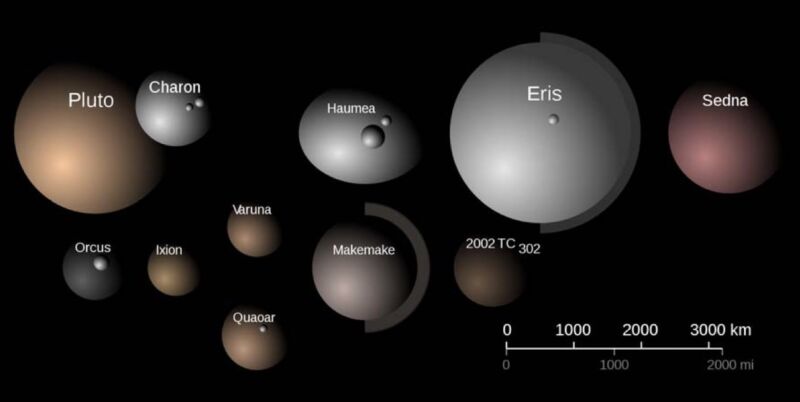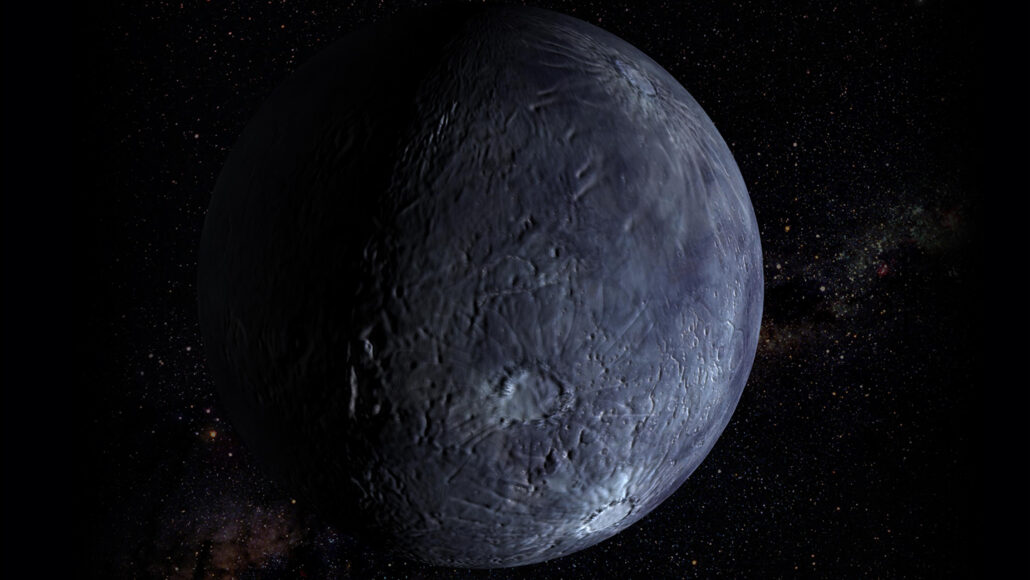
Many bodies in the Solar System have rings—gas giants, dwarf planets, even an asteroid. These examples have allowed us to get a good picture of their physics, leading to models for how rings form and what keeps the material there from falling into the planet or condensing into a moon.
But a discovery described in a paper released today suggests we've gotten something (or maybe more than one something) seriously wrong. A dwarf planet called 50000 Quaoar that orbits beyond Neptune appears to have a ring that shouldn't be there, at 7.4 times more distant than the planet's radius. There are a couple of ideas about why the ring might survive in this location, but nothing definitive at this point.
Ring signals
Quaoar resides in the Kuiper belt, an area beyond the orbit of Neptune. With a low density of icy material and no giant planets around to sweep it up, the Kuiper belt is home to a sparse population of dwarf planets like Pluto. Despite its low density, the Kuiper belt is large enough that there are a lot of bodies out there, and we've only recently developed the telescope hardware necessary to catalog them.
Quaoar, at roughly half the size of Pluto (1,100 km across), was discovered in 2002. Later observations that tracked Quaoar as it passed in front of a distant star indicated it was accompanied by a small moon named Weywot. Despite their size, a number of moons have now been found orbiting Kuiper belt objects, so this wasn't especially surprising. There was also a single observation that hinted that Quaoar might also have a ring—again, something that had been seen in other Kuiper belt objects.
For the new work, a large international team of scientists calculated when Quaoar would have passed in front of additional stars and arranged observations for that time. In these, there was a small but clear dip in the star's brightness shortly before Quaoar passed in front of it, and then a second dip equally spaced after the planet had passed. The clear explanation for these symmetric dips is a ring.
There are two possible configurations for such a ring that are consistent with this data, but one of those configurations places the ring in the same plane as the orbit of Weywot, the moon. Since this is the most typical configuration seen at other planets, the researchers expect that this is the configuration of the Quaoar system. The amount of light blocked by the ring was the same at a large range of wavelengths, suggesting that it was composed primarily of particles that were over 10 micrometers across, but not too much larger, or they would have been driven off by light from the Sun.
Repeated observations suggest that Quaoar's ring is also irregular in shape. This has also been seen in other rings, where small bodies up to a kilometer across orbiting within the ring alter its shape through their gravitational pull. The growth of these bodies is limited by their tendency to run into each other and disintegrate into the smaller particles that are typical of the rest of the ring.



3175x175(CURRENT).thumb.jpg.b05acc060982b36f5891ba728e6d953c.jpg)

Recommended Comments
There are no comments to display.
Join the conversation
You can post now and register later. If you have an account, sign in now to post with your account.
Note: Your post will require moderator approval before it will be visible.